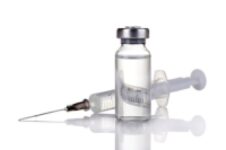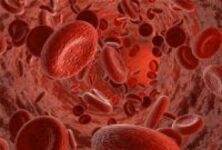Original title: Hemorrhagic and ischemic outcomes after bivalirudin versus unfractionated heparin during carotid artery stenting: A propensity score analysis from the NCDR. Reference: Wayangankar SA et al. Circ Cardiovasc Interv. 2013;Epub ahead of print. Bivalirudin is a direct thrombin inhibitor that has shown similar efficacy with a better safety profile in the context of coronary angioplasty. However, its…
Endovascular Therapy in Acute Stroke Still Being Discussed
Original title: Mechanical Recanalization with Flow Restoration in Acute Ischemic Stroke. The Mechanical Recanalization with Flow Restoration in Acute Ischemic Stroke (ReFlow) Study. Reference: Christian Roth et al. J Am Coll Cardiol Intv 2013. Article in press. The intravenous tissue-type plasminogen activator (tPA) has proved to reduce morbidity and mortality in patients with acute ischemic stroke. In the…
Cangrelor: more effective than clopidogrel without increasing bleeding
Original title: Effect of Platelet Inhibition with Cangrelor during PCI on Ischemic Events. CHAMPION PHOENIX. Reference: Deepak L. Bhatt et al. N Engl J Med 2013. DOI: 10.1056/NEJMoa1300815. Despite advances in adjuvant therapy thrombotic complications remain a problem during coronary angioplasty. So far, up to the present, there was only P2Y
Appendage trans-catheter closure is equivalent to anticoagulation in fibrillated patients.
Original title: Percutaneous Left Atrial Appendage Closure for Stroke Prophylaxis in Patients With Atrial Fibrillation: 2.3-Year Follow-up of the PROTECT AF (Watchman Left Atrial Appendage System for Embolic Protection in Patients With Atrial Fibrillation) Trial. Reference: Vivek Y. Reddy et al. Circulation. 2013;127:720-729. Atrial fibrillation is the most common sustained arrhythmia in the world and its importance lies…
Endovascular therapy after t-PA: no additional benefit for patients with acute stroke
Original title: Endovascular Therapy after Intravenous t-PA versus t-PA Alone for Stroke. Interventional Management of Stroke (IMS) III. Reference: Joseph P. Broderick et al. N Engl J Med 2013.DOI: 10.1056/NEJMoa1214300 Tissue plasminogen activator (t-PA; alteplase [Activase, Genentech, or Actilyse, Boehringer Ingelheim]) is the only reperfusion therapy proved useful for patients with acute ischemic stroke and its clinical efficacy…
Serum fibrinogen is a better predictor of periprocedural events than platelet reactivity.
Original title: Elevated Plasma Fibrinogen Rather Than Residual Platelet Reactivity After Clopidogrel Pre-Treatment Is Associated With an Increased Ischemic Risk During Elective Percutaneous Coronary Intervention. Reference: Lawrence Ang et al. J Am Coll Cardiol 2013;61:23–34. Platelet function tests have identified differences in the response of each patient to clopidogrel and minor platelet inhibition has been associated with thrombotic…
Ticagrelor, even better than we thought
Original title: Reduction in First and Recurrent Cardiovascular Events with Ticagrelor Compared with Clopidogrel in the PLATO Study. Reference: Payal Kohli et al. CIRCULATION AHA.112.124248. In analyzing randomized and monitored study outcomes, we usually observe that after the occurrence of any primary outcome event patients are typically blocked for further analysis. This practice limits the information on subsequent…
Does the systematic use of clopidogrel reduce events prior to angioplasty?
Original title: Association of Clopidogrel Pretreatment with mortality, Cardiovascular events, and Major Bleeding among patients undergoing percutaneous coronary intervention. A systematic review and Mata-analysis. Reference: Anne Bellemain-Appaix, MD et al. for the ACTION group. The loading of clopidogrel before coronary angioplasty is an accepted practice by most clinical and interventional cardiologists but, nevertheless, it is only based on…
Cilostazol reduces restenosis in infrapopliteal angioplasty
Original title: Impact of Cilostazol on Angiographic Restenosis after Balloon Angioplasty for Infrapopliteal Artery Disease in Patients with Critical Limb Ischemia Reference: Y. Soga et al. European Journal of Vascular and Endovascular Surgery 44 (2012) 577e581. Angioplasty is regularly used for patients with critical limb ischemia where restenosis is a great limitation, especially in infrapopliteal territory. The use…
High-dose atorvastatin for prevention of contrast nephropathy
Original title: Impact of a High Loading Dose of Atorvastatin on Contrast-Induced Acute Kidney Injury. Reference: Quintavalle et al. CIRCULATIONAHA.112.10331, 2012 Patients included in this study represent a subgroup with chronic renal failure (CRF) enrolled in the NAPLES II trial who were randomized to atorvastatin 80 mg 24 hours before angioplasty, (n = 202) versus the control group…
To discontinue clopidogrel after a year of infarction can be risky
Reference: Charlot et al. European Heart Journal 2012 (in press). International guideline recommendations approve giving dual antiplatelet therapy for a period of not less than 12 months after acute myocardial infarction. However, the benefit is unknown if the therapy is extended beyond 12 months. Perhaps its extension could be particularly useful in patients receiving pharmacological…







